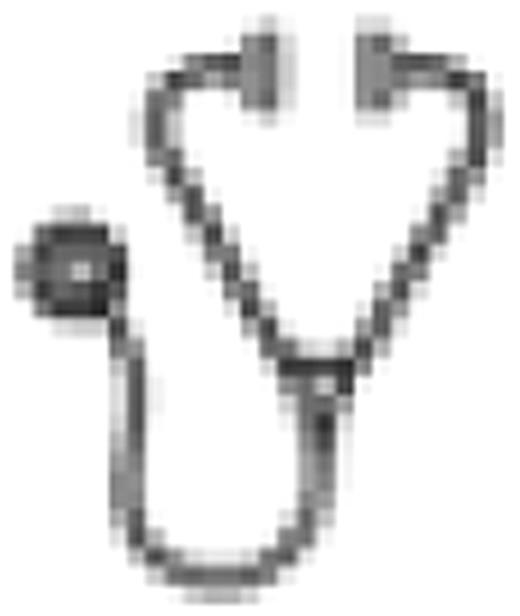Abstract
Abstract 3680
Acquired hemophilia is a life-threatening condition caused by inhibitory autoantibodies against coagulation factor VIII. Successful management of this condition requires urgent treatment of bleeding episodes, usually with factor VIII bypassing agents, as well as long-term suppression of the autoantibody. The anti-CD20 monoclonal antibody rituximab is used as a second line agent to suppress autoantibody production, but little is known about the long-term effectiveness or toxicity of rituximab. Our group was among the first to report responses to rituximab in patients with acquired hemophilia (Karwal et al. Blood 2001; 98:533a). We now report the long-term follow-up of 7 patients with acquired factor VIII deficiency treated with rituximab.
We retrospectively reviewed the medical records of 8 consecutive patients diagnosed with an acquired factor VIII inhibitor who had received rituximab as either first- or second-line immunosuppressive therapy at the University of Iowa between 1996 and 2004. Criteria for the diagnosis of acquired hemophilia included: 1) a plasma factor VIII activity (FVIII:C) level <0.5 U/mL, 2) a plasma factor VIII inhibitor level of greater than 0.5 Bethesda Units (BU), and 3) no prior history of hemophilia. Rituximab, 375mg/m2 intravenously, had been administered weekly for 4 to 6 doses. Complete response (CR) to treatment was defined as the attainment of a normal factor VIII level and an inhibitor level <0.5 BU. After obtaining informed consent, the patients or their representatives were contacted by telephone and asked to complete a verbal questionnaire to obtain follow up information. Follow-up data was obtained for 7 of the 8 patients.
Median follow up duration was 4.9 years. Median age was 77 years and 70% were female. Pre-rituximab factor VIII inhibitor titer ranged from 4 to 770 BU. Four patients had received prior immunosuppressive therapy with prednisone, cyclosporin, azathioprine, vincristine, and/or cyclophosphamide. A complete response was achieved in 6 of 7 patients (86%) with a median time to response of 10 months. No relapses had occurred in the 6 responders after 1.8 to 6.4 years of follow-up. Late-onset neutropenia was observed in 2 patients, 76 to 110 days after initiation of therapy, which is similar in time of onset to neutropenia reported in lymphoma patients treated with rituximab. Three patients died of causes unrelated to bleeding or infection.
This study represents the longest duration of follow-up to date of patients with acquired hemophilia after treatment with rituximab. The initial response rate to rituximab was high (86%) and all of the responding patients remained in CR after a median follow-up of nearly 5 years. Because spontaneous remissions may occur in patients with acquired hemophilia, it is not possible to attribute all of the observed responses to rituximab. Nevertheless, we conclude from these findings that durable responses often occur when patients with acquired hemophilia are treated with rituximab.
Off Label Use: rituximab for acquired hemophilia. Karwal:Genentech: Consultancy. Lentz:Novo Nordisk: Consultancy.

This icon denotes an abstract that is clinically relevant.
Author notes
Asterisk with author names denotes non-ASH members.

